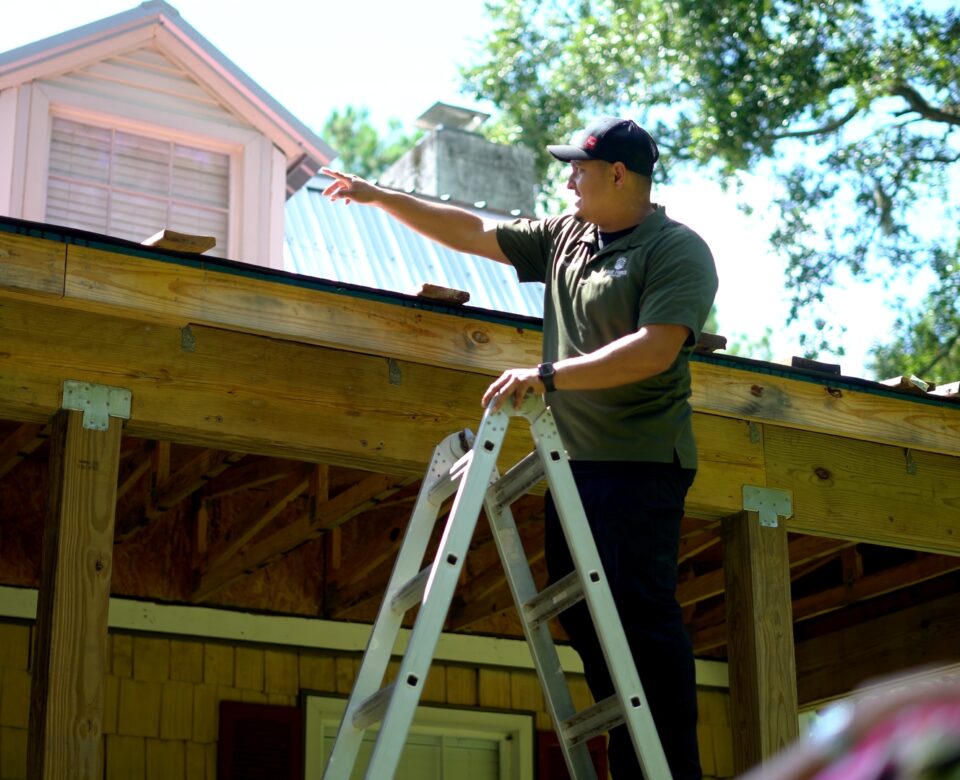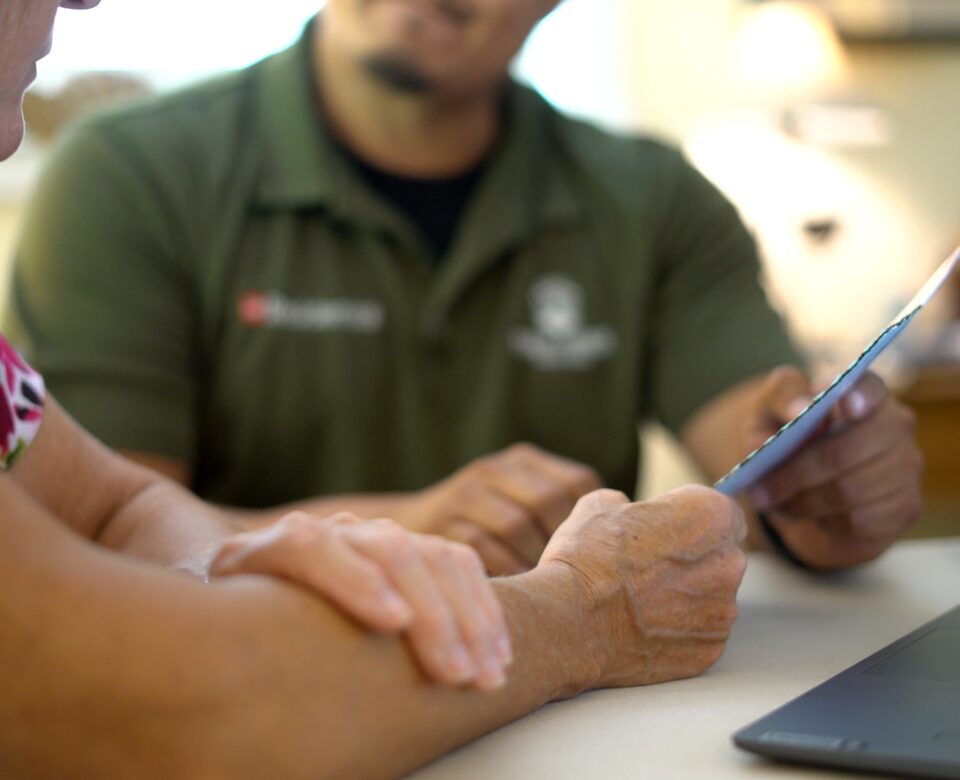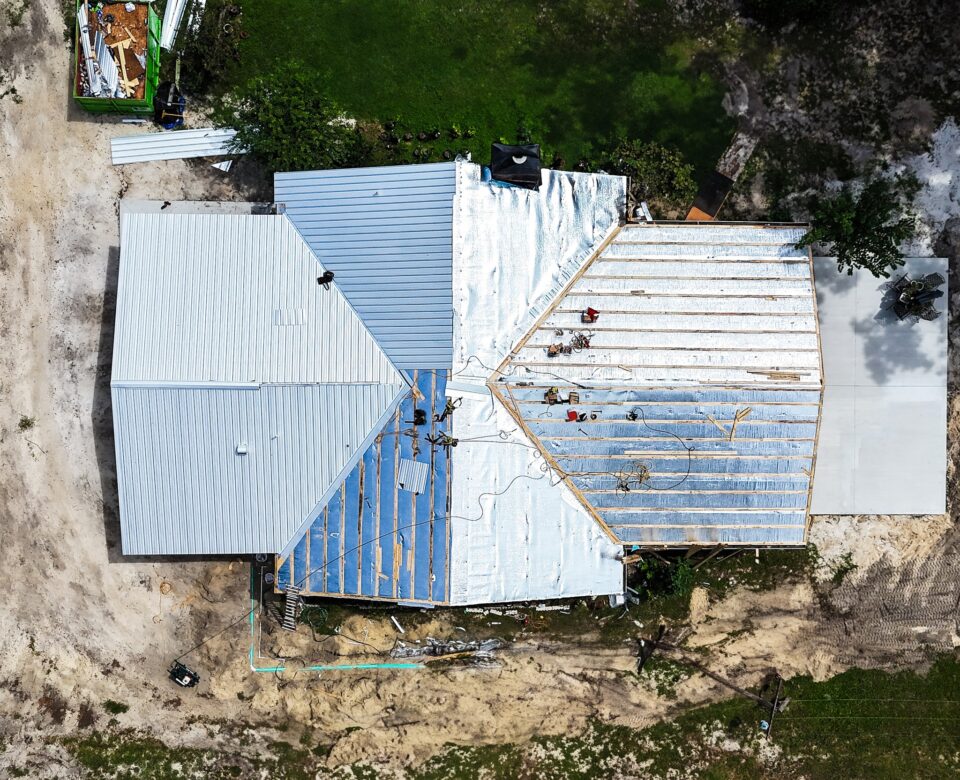
What Makes the Best Hurricane-Resistant Roofing Materials?
June 26, 2025
North Central Florida Roofing Contractors: Quality You Can Count On
July 17, 2025
My Hurricane Preparedness Experience
Don't Wait Until It's Too Late
Being in Florida, hurricanes are just part of life. I've learned the hard way that being ready is more than half the battle when those storms roll in. Every year, we're reminded of how important it is to have a solid hurricane preparedness checklist. It's not just about keeping my house in one piece; it's about making sure my family and I are safe when things get rough.
One thing that always needs my attention is the roof. It's like the hat of your house and believe me, hurricanes love to knock it right off. After each storm season, I'm on the roof checking for damage because a busted roof is just an invitation for disaster. Trust me, knowing about hurricane-resistant roofing materials has been a lifesaver.
Life in Gainesville, FL
Gainesville sits a bit more inland in North Central Florida, but that doesn’t mean we get off scot-free. Hurricanes still love to stir up trouble here with crazy winds and relentless rain. Understanding Gainesville’s quirks helps me whip up a plan that's right for our spot.
Flooding and wind? Yeah, they're the usual suspects around here. I can't stress enough how important it is to keep those gutters and downspouts clear. Plus, bracing up your windows and doors is a no-brainer if you want to keep your living room from turning into a wind tunnel. For extra tips, I always check out those hurricane roof protection tips.
Here’s my usual game plan when hurricane season kicks in:
| What I Do | Why I Do It |
|---|---|
| Roof Check-Ups | Keeps leaks and damage at bay |
| Gutter Cleaning | Cuts down on flood risks |
| Fortifying Windows & Doors | Shields the inside from Mother Nature's tantrums |
| Stocking Up on Supplies | Keeps essentials within reach during power outages |
Staying in the loop with weather updates and listening to officials is just as important. It helps me make quick calls on when to stock more supplies or hit the road if things get worse.
In short, living in Gainesville means I’ve got to stay on my toes when hurricane season rolls around. With a checklist in hand and a focus on keeping the roof over our heads sturdy, I'm ready for whatever those storms throw at us. For tips on keeping your roof safe, check out hurricane roof damage prevention.
Creating Your Hurricane Preparedness Plan
When it's hurricane season in Florida, having a solid plan can make all the difference in keeping your home and family safe. Let me share how I get ready for the worst Mother Nature can throw at us.
Establishing an Emergency Communication Plan
Talking to each other during an emergency isn't just handy—it's life-saving. Here's what I do to keep everyone in the loop:
-
Distance Communication: I pick an out-of-state relative as our go-to for sharing news among us. It's like a safe zone for messages if our local lines get jammed up.
-
Local Buddies: I jot down numbers of nearby helpers—neighbors, pals, and family. This list gets passed around to the entire household till everyone's got it.
-
Using Tech: I make sure my whole crew can shoot off a quick text, email, or even a message on social media to stay in touch.
-
Meeting Up: I map out a spot we all know to head to if we have to get out of dodge. Sharing this with the family is key.
-
Handy Emergency Contacts:
Contact Type Contact Information Out-of-state relative Jane Doe: (555) 123-4567 Local Friend John Smith: (555) 987-6543 Neighbor Sara Lee: (555) 321-7654 Emergency Services 911 -
Numbers On Hand: I’ve got important numbers programmed in phones and jotted down on a waterproof paper. Easy peasy.
Assembling a Disaster Supply Kit
A good stash of supplies is a lifesaver. Here’s my checklist:
- Water: At least one gallon per person, per day. Enough to last for three days.
- Food: Non-perishable grub to keep us going for a few days.
- Medications: A week's worth of any daily meds.
- First Aid Kit: An all-you-need health fix-up kit.
- Tools and Gear: Stuff like a wrench, pliers, flashlights, spare batteries, and a trusty manual can opener.
- Docs: Important papers tucked safely in a waterproof container.
- Clothing and Bedding: Spare blankets, clothes, and sleeping bags.
- Personal Hygiene: Think soap, toothbrushes, and the usual toiletries.
- Pet Needs: Food and water, just like for us, and any other pet essentials.
| Item | Quantity |
|---|---|
| Water | 3 gallons per person |
| Food | 3-day supply |
| Medications | 1-week supply |
| First Aid Kit | 1 |
| Tools and Supplies | Multiple |
| Important Documents | 1 waterproof container |
| Clothing | Varies |
| Personal Hygiene Items | Multiple |
| Pet Supplies | Varies |
Prepping for a hurricane with a smart plan and a packed kit makes a world of difference. Want more insights on keeping your place storm-proof? Check out our guides on hurricane-resistant roofing materials and hurricane roof protection tips. By getting a jump on things, I make sure my home is ready to ride out anything the weather throws our way.
Securing Your Home
Locking down your home is a must when prepping for hurricanes. Let me walk you through checking out your roof and gutters, and how to beef up your windows and doors.
Inspecting Your Roof and Gutters
Your roof takes one heck of a beating when a hurricane rolls in, so it deserves some serious attention.
Roof Inspection
Kick things off by sizing up your roof. Got any shingles playing hide and seek? Check them out. Any loose pieces around chimneys or vents? Those need a look too. If anything looks dicey, it's time to call in the pros. Curious about what materials to use? Check out the bit we've got on hurricane-resistant roofing materials.
| Inspection Area | What to Look For | Action Needed |
|---|---|---|
| Shingles | Missing/Damaged | Repair/Replace |
| Flashing | Loose/Cracked | Secure/Seal |
| Gutters | Clogs/Debris | Clean |
Gutter Inspection
Those gutters? Keep them clear as a whistle. Blocked gutters spell roof trouble with a capital T. Make sure they're debris-free and hanging tight on your house. When the rain gets wild, you don’t want leaks crashing your parade.
| Gutter Check | What to Look For | Action Needed |
|---|---|---|
| Debris | Leaves/Twigs | Clean |
| Attachment | Loose brackets | Tighten screws |
Want more roof-saving hacks? Swing by our piece on hurricane roof protection tips.
Reinforcing Windows and Doors
Your windows and doors need a little love when a storm is on the horizon.
Windows
Take a good gander at your windows. Any cracks or gaps? They need tending to. Storm shutters could be your knights in shining armor. No shutters? That's okay, plywood can cover for them in a pinch.
| Window Type | Protection Method | Notes |
|---|---|---|
| Standard | Storm Shutters | Permanent |
| Standard | Plywood | Temporary |
Doors
Got to make sure those doors are tough cookies. Use beefy bolts and extra-long screws, especially on sliding glass ones. They're the weak links, so consider swapping for shatter-resistant glass.
| Door Type | Reinforcement | Notes |
|---|---|---|
| Exterior | Heavy-Duty Bolts | Permanent |
| Sliding Glass | Shatter-Resistant | Permanent |
For a round-up of tips on hurricane-proofing your home, see our guides on hurricane roof damage prevention and hurricane roof insurance claims.
Giving your roof, gutters, windows, and doors a solid once-over can make your home a fortress against hurricanes. It's arguably the bedrock of getting ready for a storm.
Evacuation Readiness
Living where hurricanes frequent, like our beloved Gainesville, FL, calls for prep, prep, and more prep! Here, you'll get the skinny on what routes to take if you gotta vamoose and what must-haves to pack.
Knowing Your Evacuation Routes
Get smart about where to go when it’s time to skedaddle. Having multiple escape routes figured out beforehand will save you a world of trouble if the time comes to hit the road. It’s like having a life GPS—know your way out, keep cool, and stay unflustered.
- Local Evacuation Routes: Get the lay of the land with both main and backup roads.
- State Routes: Have those big highways and key roads mapped out.
- Shelter Locations: Know where the nearest safe haven is, and make note of any useful facilities.
| Route Type | Routes to Know |
|---|---|
| Local Roads | City streets, county roads |
| State Highways | Major highways, state roads |
| Shelter Locations | Nearest schools, community centers |
Before you dash off, make sure your roof's as tight as a drum. Get some solid tips from our hurricane roof protection tips.
Packing Essential Items
Having a jam-packed go-bag of essentials is like your travel buddy during an evacuation. It’s all about having what you need when you need it.
- Important Documents: Don’t leave without IDs, insurance, and health docs.
- Clothing: Pack clothes that suit the weather and those trusty shoes.
- Medications: Stock a stash of your meds, both prescribed and over-the-counter.
- Basic Supplies: Essentials like water, munchies that don’t spoil, flashlights, plus a first-aid kit.
| Item Type | Examples |
|---|---|
| Documents | ID, insurance papers, medical records |
| Clothing | Weather-appropriate clothing, sturdy shoes |
| Medications | Prescription meds, OTC medicines |
| Basic Supplies | Water, non-perishable food, flashlights |
Don't wait till the last minute to hurricane-proof your home sweet home. Get the details on bulletproofing your roof via our hurricane roof damage prevention.
By cluing yourself in on where to go and what to grab, you're gearing up to face hurricane season like a true Gainesville local.
Staying Informed
Keeping up with hurricane news is key for any preparation plan. Living in Gainesville, FL, I've learned firsthand how crucial it is to stay updated with weather alerts and listen to what local officials have to say.
Monitoring Weather Updates
I'm pretty religious about checking the weather when hurricane season hits. Seriously, staying on top of forecasts keeps me ready to protect my home and family. Here's what I usually check:
- National Weather Service (NWS)
- Local News Channels
- Weather Apps
Here's a quick look at how often I check each:
| Source | Frequency |
|---|---|
| National Weather Service | Every 2-3 hours |
| Local News Channels | Twice a day |
| Weather Apps | Hourly during a storm |
Being in the know helps me gear up to batten down the hatches with hurricane-resistant roofing materials and keep my family safe.
Following Local Authorities' Instructions
When local officials speak, I listen. They give the most accurate info about when to evacuate, where the shelters are, and what safety actions to take. Ignoring them could be dangerous and make things worse for first responders.
Here's what they might direct us on:
- Evacuation Orders
- Shelter Locations
- Curfews
- Emergency Services Availability
By listening and following their instructions, my family and I have a better shot at staying safe during the storm.
And when it comes to fortifying my roof, I don't cut corners. I lean on expert advice for hurricane roof damage prevention and hurricane roof protection tips.
With frequent updates and careful adherence to official guidance, I've managed to prepare effectively and keep my family safe through countless hurricanes in Gainesville, FL.
After the Storm
Assessing Roof Damage
Once a hurricane's blown through, the first thing I do is give my roof a good look-see. It's all about catching any issues early so they don't blow up into bigger problems down the road. Here's my go-to checklist:
- Missing or Damaged Shingles: I snoop around for any shingles that look like they've had a tough day—ripped off or roughed up by the wild winds.
- Debris Impact: I scan the rooftop for any hefty debris—things that might have left behind holes or dents.
- Leaks: I give the ceilings and attic a once-over for any sneaky water spots.
- Gutter Damage: I make sure the gutters are hanging in there—no clogs or breaks from all that storm junk.
For a handy cheat sheet on sizing up roof woes, I keep this table around:
| Type of Problem | What's Up | What to Do Now |
|---|---|---|
| Missing Shingles | Bald spots on the roof | Slap on a tarp to keep things covered |
| Debris Impact | Dents, holes, or big debris chunks | Gently clear away the mess |
| Leaks | Ceiling stains, soggy insulation | Patch up the leak pronto |
| Gutter Damage | Gutters off-kilter or jam-packed | Clean them out and fix back |
Need extra help storm-proofing your roof? Swing by our article on hurricane-ready roofing stuff.
Contacting Professionals for Repairs
Spotting damage is step one; next up is bringing in the pros for those fixes. Picking the right repair person means the work will hold up against whatever Mother Nature throws next.
Here's what I keep in mind when dialing up the experts:
- Reputation: I hunt for those with killer reviews and a legit track record.
- Experience: I aim for folks who really know their way around hurricane damage repairs.
- Insurance: I make sure they've got the insurance for any on-the-job mishaps.
I also gather all the necessary paperwork for any insurance claims I might need to file. Snapping photos and tracking the damage can really speed things up. Snoop around our advice on roof insurance claims for hurricane damage.
Following these steps helps keep my place ready to take on whatever storms come next. For more roof survival tips, don't miss our piece on roof protection during hurricanes.

